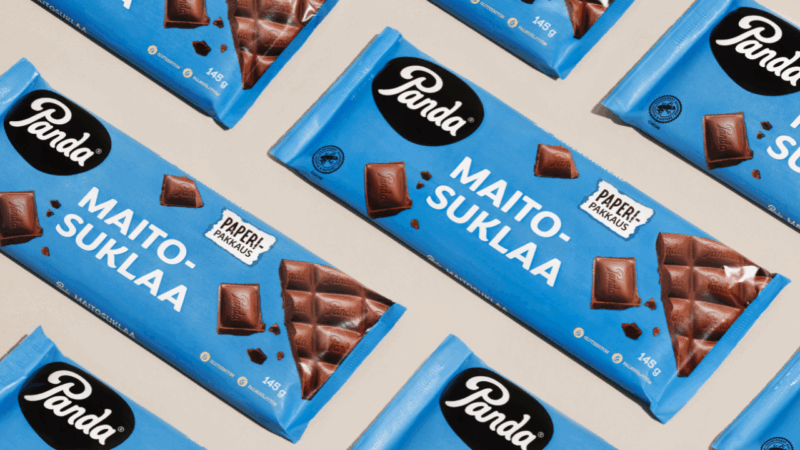The New Wood competition 2025: Paper wrapper for Panda chocolate

Uusi puu – The New Wood Project shows what wood can do. The project promotes wood-based innovations and provides information about them.
UPM Specialty Papers and Orkla Finland ran a joint pilot to test the use of a paper wrapper instead of plastic, while safeguarding product shelf life and packagingline efficiency.
Foods have long been packaged in plastics because of their protective properties. The new paper wrapper of the Panda milk chocolate is part of a pilot that aims to replace traditional plastic wrappers with recyclable alternatives, without affecting product shelf life.
Orkla Finland and UPM Specialty Papers implemented a six-month pilot period, during which the Panda milk chocolate was sold in a paper wrapper.
The wrapper is made of the UPM Asendo™ Pro 75 g/m2 barrier paper, whose grease barrier properties correspond to those required for milk chocolate. The new wrapper can be recycled as paperboard. It can be sealed using Orkla’s existing packaging machines, without extensive investments in equipment. The third partner in developing the wrapper was the printing company Walki Westpak.
Traditionally milk chocolate packaging has been made of paper or a paper-plastic laminate, protecting the product from moisture and grease stains. The new wood-based solution by Orkla and UPM is designed to combine protective qualities with recyclability. The UPM Asendo Pro paper holds two food safety certificates (BfR, FDA) and has been extensively tested.
The raw material of the paper comes from sustainably managed forests. The material meets the international criteria of both food safety and recyclability, and its environmental impact has been assessed across its entire lifespan.
The goal of Orkla Finland and UPM’s pilot is to gain experience of the product’s functionality across the value chain, from manufacturing to consumer experience. After the pilot phase in the spring and summer of 2025, the solution will be assessed and decisions about further measures will be taken.
The project is linked to a broader effort to reduce the use of fossil raw materials and to respond to future packaging requirements within the EU. The recycling rate of fibre-based packaging is significantly higher than that of plastics, and there is already a functioning recycling infrastructure for them. Thanks to this, they could have a financial competitive edge as packaging legislation is reformed.
Forest.fi and New Wood are initiatives of the Finnish Forest Association.